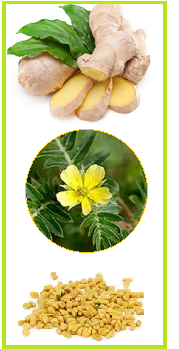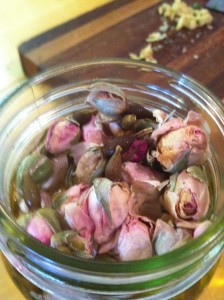 Whether you are an Ayurvedic, Chinese or Western herbalist, you may have a few favorite lactation herbs already. There are so many herbs to choose from.
Whether you are an Ayurvedic, Chinese or Western herbalist, you may have a few favorite lactation herbs already. There are so many herbs to choose from.
When I ask myself, what are the top herbs for early postnatal use, then ask again, what are the top ones for lactation, my list is often the same, and ginger and pepper are usually at the top. Why? Because we are talking today about the first WEEK after childbirth, when agni is low and vata is high. For lactation, the body’s resources need to be flowing and nourishing, and mother nature does the rest best when she is assisted with certain pungent herbs. Their nutrition-transforming, fast-acting and channel clearing qualities are significant.
“Agni” – our digestive and transformative chemistries, are so important for lactation, happy baby tummies, rejuvenation, strength, mood and feeling light, clear and energized. You will find the postpartum agni needs help to make good use of food. That’s why it’s important to attend to agni first, especially before milk comes in.
Using herbs which are easily accessed in the west, here are my picks. These 5 herbs work like a team to make lactation easy:
- Ginger – Enhances digestion and warmth; purifies and clears breast, lymph, respiratory channels and fluids; helps burns toxins/wastes; reduces gas and bloating; lowers vata and kapha; is sattvic–promoting clarity, lightness and purity of mind; and is immune protective.
- Pepper – Enhances digestion and warmth; purifies and clears breast channels, lymph, respiratory channels and fluids; burns toxins/wastes; reduces gas and bloating; lowers vata and kapha; strongly immune protective, including antiviral and antiparasitic; special muscle tissue purification, energizing (rajasic).
- Garlic – Strong galactagogue; enhances digestion and warmth; purifies and clears lymph, blood, respiratory channels and fluids; burns toxins/wastes; reduces gas, bloating; lowers vata and kapha; strongly immune protective including antibacterial and antiparasitic; energizing (rajasic), grounding (tamasic), strengthening (rajasic); protects the subtle energy field. * Must be well cooked.
- Fennel/Anise – Good galactagogue; antiparasitic, digestive, anti-acidic (fennel), moves gas out and shrinks bloating, (gentle deepan and pachan actions); cooling/warming (respectively), gentle anti cough/kapha; anti vata; gently estrogenic; sattvic.
- Fenugreek – Good galactagogue, antiparasitic, heals small intestine wall and digestive function; helps loosen retained placental fragments and brings down upper body heat; helpful with fever; gently warming, gentle anti-cough, anti-vata and anti-kapha; sattvic. Not very effective in capsules for many.
Do you see how all these 5 herbs help digestion? Continue with these digestives, adjusting heat level gradually as appropriate, over the next weeks and months postpartum for best results. But please don’t take them in capsules – make teas and season your food with them.

What are the next 5 herbs on your list?
There are quite a number of herbs which help hormones, digestion and lactation together, and also help keep the body relaxed and warm. When you are creating an herbal formula, think about all of these properties.
If you are thinking that shatavari or borage might be good additions to the list, think carefully. Surprisingly, shatavari – while it is a an awesome galactagogue and female rejuvenative – is not appropriate for the first 9-10 days for most mamas. Both are too heavy and cooling for early postpartum (borage is a refrigerant), and should be avoided.
If mama is having hot flashes, hot tea using cumin, coriander and fennel is a better choice in the first week or so, with shatavari coming in after agni is strong and channels are working well.
And if you are wanting to put raspberry leaf, nettles, gotu kola or oat straw on your list? You’ll want to add 1 or more of the first 5 from my lactation list, to help balance their cooling, drying, and/or astringent qualities – which are all vata increasing.
Dr. Aviva Romm recently wrote a great blog post called Five Favorite Herbal Medicines for Women you will enjoy. I love that she addresses the western woman’s herb resources. These herbs are not our favorite picks for the first few days after childbirth however, just because we have these needs which are not well understood yet in the west.
If you want to learn more about the Ayurvedic approach to postpartum herbalism, you can take our Safe Postpartum Herbs class. In this 5 hour lecture series, you will learn how to safely help a mother and newborn with many common issues. There are basic Ayurvedic principles which are not widely known and really complement the western–or Chinese pharmacopeia. I hope you will learn these secrets and practice them.



